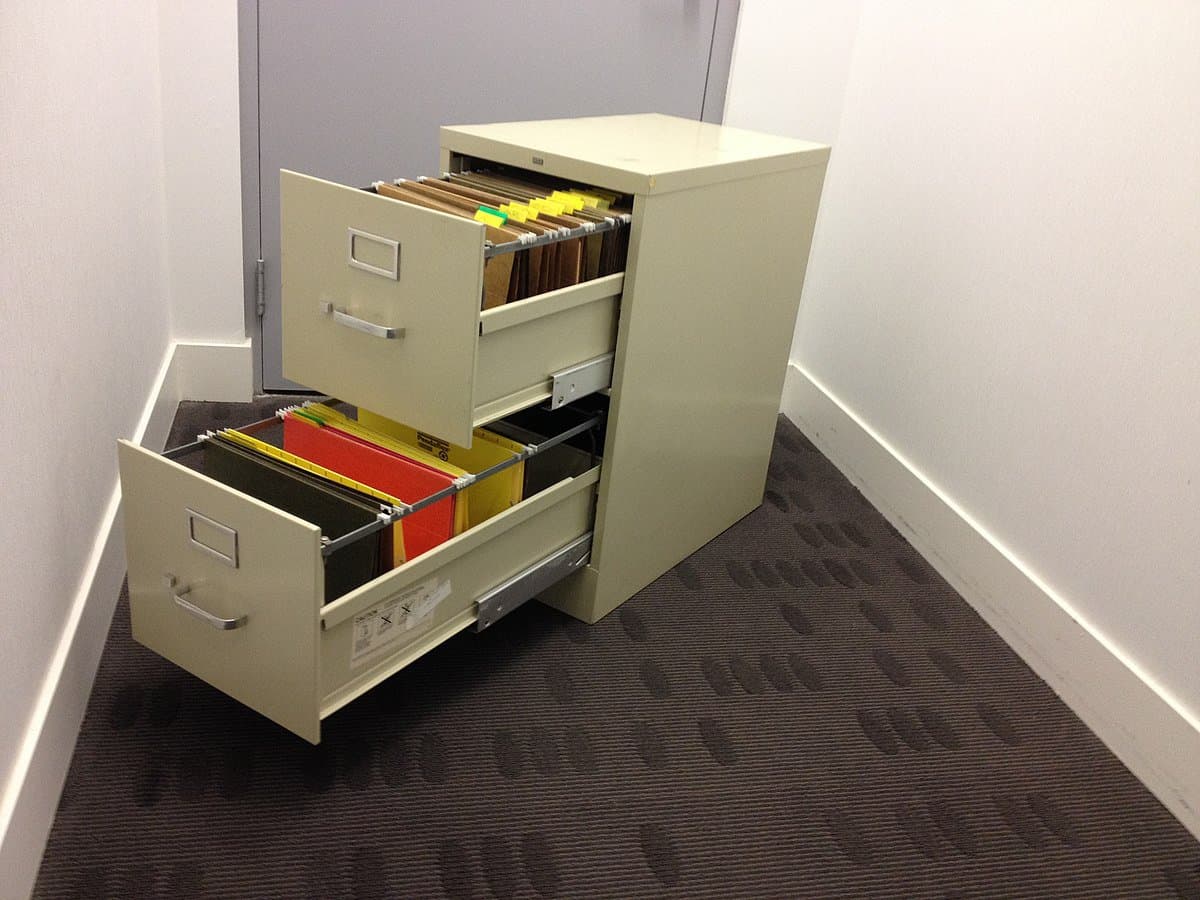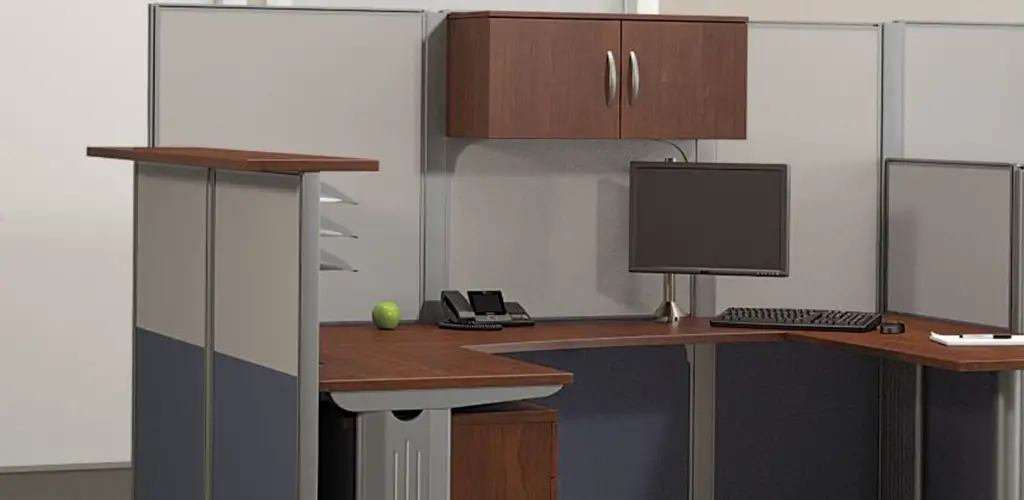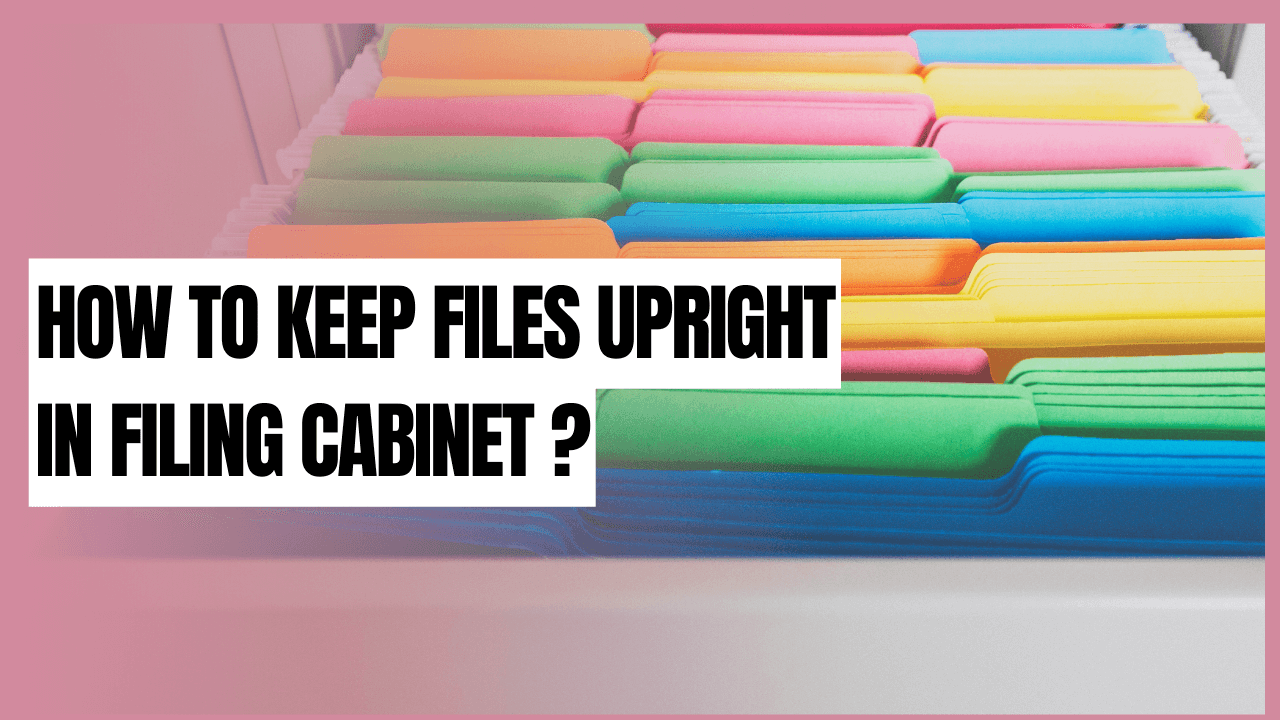Understanding File Cabinet Mechanics

Files falling over in filing cabinets can be a frustrating and time-consuming problem. This can happen due to several factors, and understanding the mechanics behind it can help you find the right solution.
Common Causes of Files Falling Over
The following are common reasons why files may fall over in filing cabinets:
- Overfilling: When file drawers are overcrowded, files can become unstable and prone to falling over. Overfilling puts pressure on the drawer mechanism and can lead to misalignment, causing files to lean and eventually fall.
- Improper File Folder Selection: Using the wrong type of file folders can also contribute to files falling over. Some folders are designed for lateral filing systems, where they hang from rails, while others are intended for traditional upright filing.
- Damaged or Worn-Out File Cabinet Components: File cabinets are mechanical systems, and over time, components like drawer slides, rails, and suspension mechanisms can wear out or become damaged. This can lead to misalignment and instability, causing files to fall over.
- Uneven Weight Distribution: Placing heavier files in one area of the drawer while leaving other areas empty can cause an imbalance, leading to instability and files falling over.
- Incorrect Hanging File System Installation: Hanging file systems rely on properly installed rails and hangers. If these are not installed correctly, the files can become unstable and fall over.
Types of File Folders
File folders are available in various types, each designed for specific filing systems. Understanding the differences between these types is crucial for keeping files upright.
- Letter-Sized Folders: These are the most common type of folders, designed for standard letter-sized documents. They are typically used in traditional upright filing systems and are not suitable for hanging file systems.
- Legal-Sized Folders: These folders are slightly larger than letter-sized folders and are designed to accommodate legal documents. They are also typically used in traditional upright filing systems.
- Hanging Folders: These folders are specifically designed for hanging file systems. They have a metal or plastic tab that hangs from a rail, providing stability and allowing for easy access to files.
- End Tab Folders: These folders have a tab on the end, making them ideal for lateral filing systems, where they are placed side-by-side on shelves.
Hanging File Systems
Hanging file systems are a popular and efficient method for organizing and storing files. They utilize a series of rails and hangers to keep files upright and accessible.
- Rails: These are metal or plastic tracks that are installed in the file drawer. The hangers slide along these rails, allowing for easy access to files.
- Hangers: These are metal or plastic tabs that attach to the file folders. They are designed to hang from the rails, keeping the files upright and organized.
Benefits of Hanging File Systems: Hanging file systems offer several advantages over traditional upright filing systems:
- Improved Organization: Hanging folders keep files upright and easily accessible, making it easier to find specific documents.
- Enhanced Efficiency: The hanging system allows for quick and easy retrieval of files, improving productivity.
- Reduced Risk of Damage: Hanging folders provide stability and prevent files from falling over, reducing the risk of damage.
- Increased Storage Capacity: Hanging file systems can hold more files in a given space compared to traditional upright filing systems.
Proper Filing Techniques

Proper filing techniques are essential for maintaining an organized and efficient filing system. These techniques ensure that files are easily accessible, prevent damage, and contribute to the overall stability of your filing cabinet.
Inserting and Removing Files
Inserting and removing files from a hanging file system should be done with care to avoid damaging the files or the hanging folders. The following steps provide a safe and efficient method:
- Locate the correct hanging folder: Identify the hanging folder that corresponds to the file you wish to insert or remove.
- Open the folder: Gently pull the hanging folder towards you, ensuring that the file tabs are facing you.
- Insert or remove the file: For insertion, slide the file into the folder, ensuring it is aligned with the other files. For removal, carefully pull the file out, taking care not to damage the file or the folder.
- Close the folder: Gently push the hanging folder back into the cabinet, ensuring it is properly aligned with the other folders.
Organizing Files within a Cabinet
Organizing files within a cabinet involves creating a logical and structured system that ensures files are easily retrievable. The following steps Artikel a practical approach:
- Establish a filing system: Create a clear and concise filing system that reflects the organization of your documents. This could involve categorizing files by subject, client, project, or any other relevant criteria.
- Label files clearly: Use clear and consistent labeling for all files and folders. Ensure labels are legible and accurately reflect the contents of each file.
- Organize files within folders: Arrange files within each folder in a logical order, such as chronologically or alphabetically.
- Position folders within the cabinet: Arrange hanging folders within the cabinet in a logical order, following your established filing system.
Maximizing Space and Stability
Maximizing space within a filing cabinet while maintaining stability is crucial for efficient organization. The following tips help achieve this balance:
- Use vertical space: Utilize the full height of the cabinet by stacking folders vertically, ensuring that each folder is properly secured.
- Compress files: Before filing, compress files to reduce their bulk and maximize space within each folder.
- Use dividers: Utilize dividers to separate different categories of files within the cabinet, creating distinct sections for easy access.
- Regularly purge files: Periodically review and discard outdated or unnecessary files, freeing up space within the cabinet.
Choosing the Right Filing Cabinet: How To Keep Files Upright In Filing Cabinet

The right filing cabinet can make a significant difference in the organization and efficiency of your workspace. When choosing a filing cabinet, you need to consider your specific needs, the available space, and the type of files you will be storing.
Types of Filing Cabinets, How to keep files upright in filing cabinet
Filing cabinets are available in various designs, each with its own set of advantages and disadvantages.
- Lateral Filing Cabinets: These cabinets have drawers that open horizontally, providing easy access to files. Lateral filing cabinets are ideal for large offices or those who need to store a lot of files. They are also known for their stability, as the weight is distributed evenly across the base.
- Vertical Filing Cabinets: Vertical filing cabinets have drawers that open vertically, similar to a traditional dresser. They are typically smaller than lateral filing cabinets and are suitable for smaller offices or individuals who need to store fewer files. While they offer excellent accessibility, they may not be as stable as lateral cabinets, especially when fully loaded.
- Mobile Filing Cabinets: These cabinets are mounted on wheels, making them easy to move around the office. Mobile filing cabinets are particularly useful for small offices or those with limited floor space. However, their stability may be compromised, especially on uneven surfaces.
Materials Used in Filing Cabinets
The material used to construct a filing cabinet can significantly impact its durability, stability, and price.
| Material | Advantages | Disadvantages |
|---|---|---|
| Metal | Durable, fire-resistant, easy to clean, available in various colors | Can be heavy, prone to scratches and dents |
| Wood | Aesthetically pleasing, can be customized, good sound insulation | More expensive than metal, prone to scratches and dents, susceptible to moisture damage |
| Plastic | Lightweight, affordable, easy to clean | Not as durable as metal or wood, can be easily scratched or dented |
Factors to Consider When Choosing a Filing Cabinet
When choosing a filing cabinet, it is crucial to consider the following factors:
- Size and Capacity: The size of the filing cabinet should be suitable for the amount of files you need to store. Consider the dimensions of the cabinet and the number of drawers it has.
- Stability and Upright File Storage: Ensure the cabinet is stable enough to support the weight of the files, especially if you are storing heavy documents. Look for cabinets with sturdy construction and a wide base.
- Security: If you are storing sensitive documents, consider a filing cabinet with a lock.
- Accessibility: Choose a cabinet that allows for easy access to your files. Consider the height of the drawers and the ease of opening and closing them.
- Budget: Filing cabinets come in a wide range of prices. Set a budget before you start shopping and stick to it.
How to keep files upright in filing cabinet – Keeping your files upright in a filing cabinet is like keeping your kitchen organized. A good filing system is like having a well-designed kitchen cabinets with sink combo – it makes everything easier to find! Just like a good sink keeps your dishes clean, a good filing system keeps your paperwork in order.
Yo, wanna keep your files straight and organized in that filing cabinet? Pro tip: use hanging folders! Speaking of organization, check out these awesome closet and TV cabinet designs for bedrooms for your space. Back to the files, keeping them upright in the cabinet is all about the right folders and maybe a little label maker action.
You’ll be a filing pro in no time!
